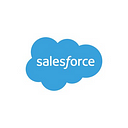Unlocking Slack’s Full Potential With Intelligent Search
Mastering the art of communication in today’s workplace depends on our ability to work asynchronously.
But the need to respect different time zones and personal schedules is only part of the challenge. The bigger factor is that there simply aren’t enough hours in the day to discuss everything on Zoom calls and deliver valuable work.
That’s why the average employee now spends 10 hours a week collaborating in Slack. It’s the only way today’s remote and hybrid work models can function — at least, without driving us all to burnout.
And yet, Slack itself can complicate our workflow if it’s not used effectively. It’s part of a sprawl of SaaS applications most of us now navigate daily in order to get things done. Hopping from platform to platform to find, update, and share documents can feel distracting, exhausting, and prone to error. So it’s no wonder most employees are grateful for any opportunities to cut out steps.
At Coveo, we surveyed our team to discover how it was using Slack — and it revealed the importance of making information easier to find and share within the app.
Slack Collaboration Goes Beyond Messaging
There’s no doubt Slack is well on its way to becoming the “digital HQ.” Slack claims the average employee is connected for nine hours daily, and more than 95% of the employees we surveyed said the app was at least open in the background their entire working day.
But, crucially, Slack affords some freedom to employees to choose when they engage. Only 18% of our respondents said they expected an immediate response to messages — and 16% said they had no expectations at all about when they should receive a response.
Most employees consider this a reasonable way to communicate at a distance. Our research found 82% said they received “many” messages throughout the day, but only 8% considered it “hard to manage” — most likely because they have the freedom to decide when they respond.
But it would appear that messaging is only one piece of the toolkit required for effective collaboration. With so many hours now being spent in Slack, being able to access and share knowledge without leaving the app is increasingly important.
In addition, 80% of employees said they shared work-related documents every day, or many times a week, and when it came to naming their favorite integrations, many of the respondents lauded those that minimized context-switching by bringing company knowledge inside the platform.
“Slack is my central hub,” said one respondent. “I want everything to go through Slack.” It was a sentiment echoed by many others.
How Intelligent Search Gets More Out of Slack
In today’s digital workplace, we often don’t know where to start looking for the information we need. Everything from company procedures to product knowledge can exist across various data repositories, from Confluence to Google Drive, to SharePoint Online.
Being unable to find documents at critical moments doesn’t just frustrate employees, it can also slam the brakes on collaborative projects, and lower the standard of service an employee provides to a customer.
Intelligent search is already solving this problem for even the most complex organizations. By breaking down silos, centralizing company knowledge, and personalizing search results with AI, employees waste less time digging for information, are better equipped to collaborate, and make quick decisions. This improves the quality of interactions, both internally and with partners or customers.
A ‘Next Generation Experience — For Employees and Customers
Giving your employees a direct line to your company search engine within Slack might just seem like a ‘nice to have,’ but it’s becoming more essential as people’s expectations for digital experiences increase.
Deploying personalized knowledge discovery across multiple workplace touchpoints creates the consistent and familiar digital experience younger people have come to expect. Generation Z, in particular, has a preference for ‘micro-learning’, and expects self-service everywhere. So the companies that aren’t providing this might find it harder to hold onto their younger talent.
And with the advent of Slack Connect, more companies are using Slack to serve their customers and partners. Intelligent search within Slack equips agents with the right knowledge to help them deliver a better standard of service, which we know gives companies a powerful competitive advantage.
By integrating intelligent search with your Slack workspace, you’re bringing together the two most important requirements for collaboration to happen — communication and knowledge.
Check out how the Coveo Slack Application, available on AppExchange, takes this a step further by bringing the AI-powered search experience inside Slack, allowing employees to perform company-wide searches with a single click or slash command. The Coveo Slack Application also allows employees to share relevant files and documents directly into chats and channels, without the hassle of copying and pasting URLs. This keeps employees in Slack — and more importantly in their flow — creating an agile and frictionless environment for teams to plan and build their next innovations.
